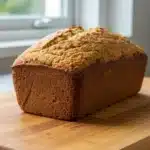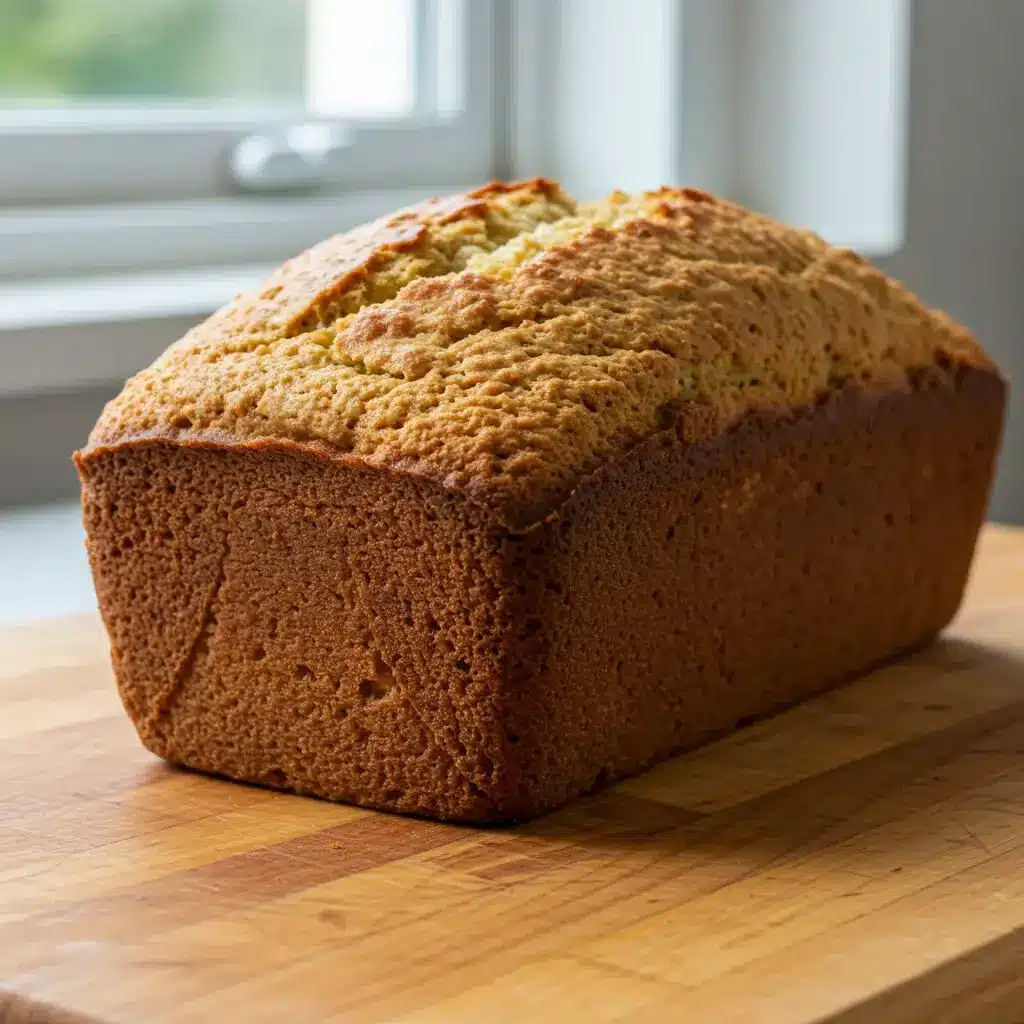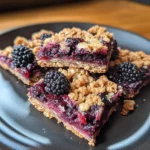In the world of quick, healthy, and delicious recipes, the 2-Ingredient High Protein Bread stands out as a remarkable option for anyone looking to enjoy a nutritious meal without the hassle. Whether you’re a fitness enthusiast, a busy professional, or someone embarking on a healthier lifestyle journey, this bread is a fantastic addition to your culinary repertoire. Packed with protein and requiring minimal ingredients, it’s a perfect solution for those who love simplicity without compromising on health benefits.
Ingredients
This high-protein bread requires only two primary ingredients, making it not only easy to prepare but also a budget-friendly choice. Here’s what you’ll need:
- 1 cup almond flour (or oat flour)
- 1 cup egg whites (or silken tofu)
With these two ingredients, you can create a delightful loaf that is both satisfying and nourishing.
Instructions
The preparation of this bread is straightforward and quick, allowing you to enjoy fresh, homemade bread without spending hours in the kitchen. Follow these simple steps:
- Preheat your oven to 350°F (175°C).
Begin by setting your oven to the right temperature to ensure an even bake. - In a mixing bowl, combine almond flour and egg whites. Mix until smooth.
Use a whisk or a blender to combine the ingredients thoroughly until you have a smooth batter. If you’re using silken tofu as a substitute, blend it well to achieve a similar consistency. - Pour the mixture into a greased loaf pan.
Make sure the pan is well-greased to prevent sticking. You can use parchment paper for easier removal. - Bake for 20-25 minutes or until golden brown.
Keep an eye on the bread as it bakes. It should develop a nice golden-brown crust. - Let it cool, then slice and enjoy!
Allow the bread to cool completely before slicing. This will help maintain its structure and prevent crumbling.
Nutrition Facts
Understanding the nutritional value of what you consume is crucial, especially when you’re focusing on a high-protein diet. Here’s the breakdown of the nutrition per slice (12 slices in total):
- Calories: 80
- Protein: 7g
- Carbohydrates: 3g
- Fat: 5g
- Fiber: 2g
This bread is not only low in calories but also rich in protein, making it an excellent choice for those looking to boost their protein intake.
How to Serve
The versatility of this high-protein bread allows it to be served in numerous ways, enhancing your meals or snacks. Here are some serving suggestions that not only highlight its nutritional value but also elevate your dining experience:
Toasted with Avocado
One of the simplest yet most delicious ways to enjoy this bread is by toasting it and topping it with creamy mashed avocado. Start by toasting the bread until it reaches your desired level of crispiness. Mash a ripe avocado in a bowl, adding a sprinkle of salt and a dash of lemon juice to enhance the flavor and prevent browning. You can also customize this dish with additional toppings such as red pepper flakes for a spicy kick, a drizzle of olive oil for richness, or even a poached egg for added protein. This combination makes for a nutritious and filling breakfast that keeps you energized throughout the morning.
Open-Faced Sandwich
Elevate your lunch game with an open-faced sandwich that is both visually appealing and satisfying. Begin with a slice of your high-protein bread as the base. Layer it with thinly sliced turkey or chicken breast for lean protein. Add fresh vegetables such as ripe tomato slices, crisp lettuce, and even cucumber for a refreshing crunch. For additional flavor, consider spreading a layer of hummus or mustard beneath the toppings. This not only adds moisture but also introduces new flavors. You can experiment with different combinations, such as adding avocado or cheese, to suit your taste. Open-faced sandwiches are not only quick to prepare but also allow for creative expression in the kitchen.
With Nut Butter
For a simple yet nourishing snack, spread your choice of nut butter—be it almond, peanut, or even cashew—on a slice of this high-protein bread. Nut butters are packed with healthy fats, protein, and fiber, making them a perfect complement to the bread’s nutritional profile. To make this snack even more delightful, consider adding sliced bananas or strawberries on top of the nut butter for a sweet touch. Drizzle with honey or sprinkle with chia seeds for added texture and nutrients. This combination is not only delicious but also serves as a great pre- or post-workout snack, providing the energy you need.
As a Side Dish
This high-protein bread also shines when served as a side dish. Its hearty texture and rich flavor make it an excellent partner for soups, salads, and stews. Whether you’re enjoying a warm bowl of tomato basil soup or a crisp garden salad, a slice of this bread can elevate your meal by adding a satisfying crunch and additional nutrients. For a gourmet touch, consider making croutons by cubing the bread, tossing it with olive oil and herbs, and baking until golden brown. These can be sprinkled over salads for added texture or served alongside soups to make them more filling. Additionally, try serving with dips like tzatziki or hummus for a Mediterranean flair.
Breakfast Sandwich
Transform your morning routine with a hearty breakfast sandwich. Start by frying or scrambling an egg to your liking—consider adding spinach, cheese, or sautéed mushrooms for extra flavor. Layer this on a slice of the high-protein bread, and top it with another slice to create a satisfying sandwich. You can even grill the sandwich in a skillet with a little butter for a crispy finish. Pair it with fresh fruit or a side of yogurt for a balanced breakfast that’s sure to keep you satisfied until lunchtime.
Sweet Treats
Don’t overlook the potential for a sweet indulgence! This high-protein bread can also be used to make delightful French toast. Dip slices in a mixture of beaten eggs, milk, and cinnamon, then cook on a skillet until golden brown. Serve with fresh berries, maple syrup, or a dollop of Greek yogurt for a nutritious twist on a classic breakfast. This method not only enhances the flavor but also adds a delightful texture that makes for a perfect weekend brunch option.
By exploring these various serving ideas, you can fully appreciate the versatility of this high-protein bread, making it a staple in your kitchen for any meal or snack occasion. Each suggestion not only enhances the flavor but also maximizes the nutritional benefits, allowing you to enjoy delicious and healthy options every day.
Additional Tips
To make the most of your baking experience and ensure the best results, consider these comprehensive additional tips that will not only enhance your skills but also elevate the flavor and quality of your baked goods:
Experiment with Flavors
One of the most enjoyable aspects of baking is the opportunity to get creative with flavors. Here are some ideas to inspire your culinary adventures:
- Herbs and Spices: Incorporating fresh herbs like rosemary, thyme, or basil can introduce a delightful aroma and a savory twist to your baked goods. For example, adding chopped fresh rosemary to a focaccia dough can create a fragrant and flavorful base. Additionally, spices such as cinnamon, nutmeg, or even cardamom can add warmth and depth to sweet breads and pastries.
- Citrus Zest: Brighten up your batter by adding the zest of citrus fruits such as lemons, limes, or oranges. This will not only enhance the flavor but also provide a fresh aroma that can uplift the overall experience of your baked goods.
- Extracts and Essences: Vanilla extract is a classic, but don’t hesitate to experiment with other extracts like almond, maple, or coconut. A few drops can transform the flavor profile significantly. For a more complex flavor, consider combining different extracts.
- Nuts and Seeds: Incorporating toasted nuts such as walnuts, pecans, or almonds can add a delightful crunch and a rich flavor. Similarly, seeds like sunflower, pumpkin, or sesame can enhance both the taste and texture of your bread or baked goods.
Texture Adjustments
Understanding how ingredient ratios affect the texture of your baked goods is crucial:
- Density Control: If you prefer a denser bread, consider slightly reducing the amount of egg whites used in your recipe. Egg whites provide lift and lightness, so decreasing them will yield a more compact loaf. You can also experiment with using whole eggs instead of just egg whites, as the egg yolks contribute to a richer texture.
- Flour Variations: The type of flour used can drastically change the texture. For a chewier bread, try bread flour, which has a higher protein content. For softer breads, all-purpose flour works well. Additionally, consider incorporating whole wheat flour for added density and nutrition.
- Liquid Adjustments: Adjusting the liquid content can also influence texture. If your dough seems too dry, adding a little more liquid can help achieve the desired consistency. Conversely, if the dough is too wet, a small increase in flour might be necessary.
Storage
Proper storage is essential to maintaining the freshness of your baked goods:
- Airtight Containers: To maintain the moisture and softness of your bread, store it in an airtight container at room temperature for up to five days. It’s important to let the bread cool completely before sealing it to prevent condensation, which can lead to sogginess.
- Refrigeration: While refrigeration can extend the life of your bread, it may also dry it out. If you choose to refrigerate, wrap the bread tightly in plastic wrap or foil to minimize moisture loss.
- Freezing for Longevity: For longer storage, consider freezing slices of bread. Wrap each slice individually in plastic wrap and then place them in a freezer-safe bag. This method allows you to grab a slice whenever you need it without defrosting the entire loaf. When ready to use, simply remove the desired number of slices and let them thaw at room temperature or heat them directly in the toaster.
Reheating
Reheating your baked goods correctly can make a world of difference:
- Toaster Method: For a quick and effective way to enjoy your bread, use a toaster. This method will revive the crust, making it crisp while keeping the inside soft and warm. For best results, consider slicing the bread before freezing, so you can toast only what you need.
- Oven Method: For larger loaves or when reheating multiple slices, preheat your oven to about 350°F (175°C). Wrap the bread in aluminum foil to retain moisture and prevent over-browning, and heat for about 10-15 minutes. This method not only warms the bread but also brings back its freshly baked aroma.
- Microwave Caution: While the microwave is a quick option, it can make bread rubbery if overheated. If you choose this method, use a microwave-safe dish and cover the bread with a damp paper towel to retain moisture. Heat in short bursts of 10-15 seconds, checking frequently to avoid overcooking.
By incorporating these additional tips into your baking routine, you can enhance your culinary creations, ensure optimal storage, and enjoy your baked goods at their best. Happy baking!
FAQs
Can I use a different type of flour?
Yes, you can use oat flour as an alternative to almond flour. Both provide a good texture and flavor, but oat flour will result in a slightly denser loaf.
What can I use instead of egg whites?
Silken tofu is a great substitute for egg whites, especially for those following a vegan diet. It maintains the protein content and offers a similar texture.
Is this bread gluten-free?
Yes, when using almond flour, this bread is gluten-free. If you opt for oat flour, ensure it is certified gluten-free if you have gluten sensitivities.
Can I add sweeteners or other ingredients to the bread?
Certainly! You can add a touch of honey or maple syrup for sweetness. Nuts, seeds, or dried fruits can also be incorporated for additional flavor and texture.
Conclusion
The 2-Ingredient High Protein Bread is a testament to the idea that simplicity can be delicious and nutritious. With minimal effort, you can create a versatile bread that fits seamlessly into a health-conscious lifestyle. Whether you’re enjoying it as part of a meal or as a standalone snack, this bread provides a satisfying boost of protein and flavor. Embrace the ease and benefits of this recipe and enjoy the delightful taste of homemade bread without the fuss.
Print
2-Ingredient High Protein Bread Recipe
Ingredients
- 1 cup almond flour (or oat flour)
- 1 cup egg whites (or silken tofu)
Instructions
- Preheat your oven to 350°F (175°C).
Begin by setting your oven to the right temperature to ensure an even bake. - In a mixing bowl, combine almond flour and egg whites. Mix until smooth.
Use a whisk or a blender to combine the ingredients thoroughly until you have a smooth batter. If you’re using silken tofu as a substitute, blend it well to achieve a similar consistency. - Pour the mixture into a greased loaf pan.
Make sure the pan is well-greased to prevent sticking. You can use parchment paper for easier removal. - Bake for 20-25 minutes or until golden brown.
Keep an eye on the bread as it bakes. It should develop a nice golden-brown crust. - Let it cool, then slice and enjoy!
Allow the bread to cool completely before slicing. This will help maintain its structure and prevent crumbling.
Nutrition
- Serving Size: One Normal Portion
- Calories: 80
- Fat: 5g
- Carbohydrates: 3g
- Fiber: 2g
- Protein: 7g





